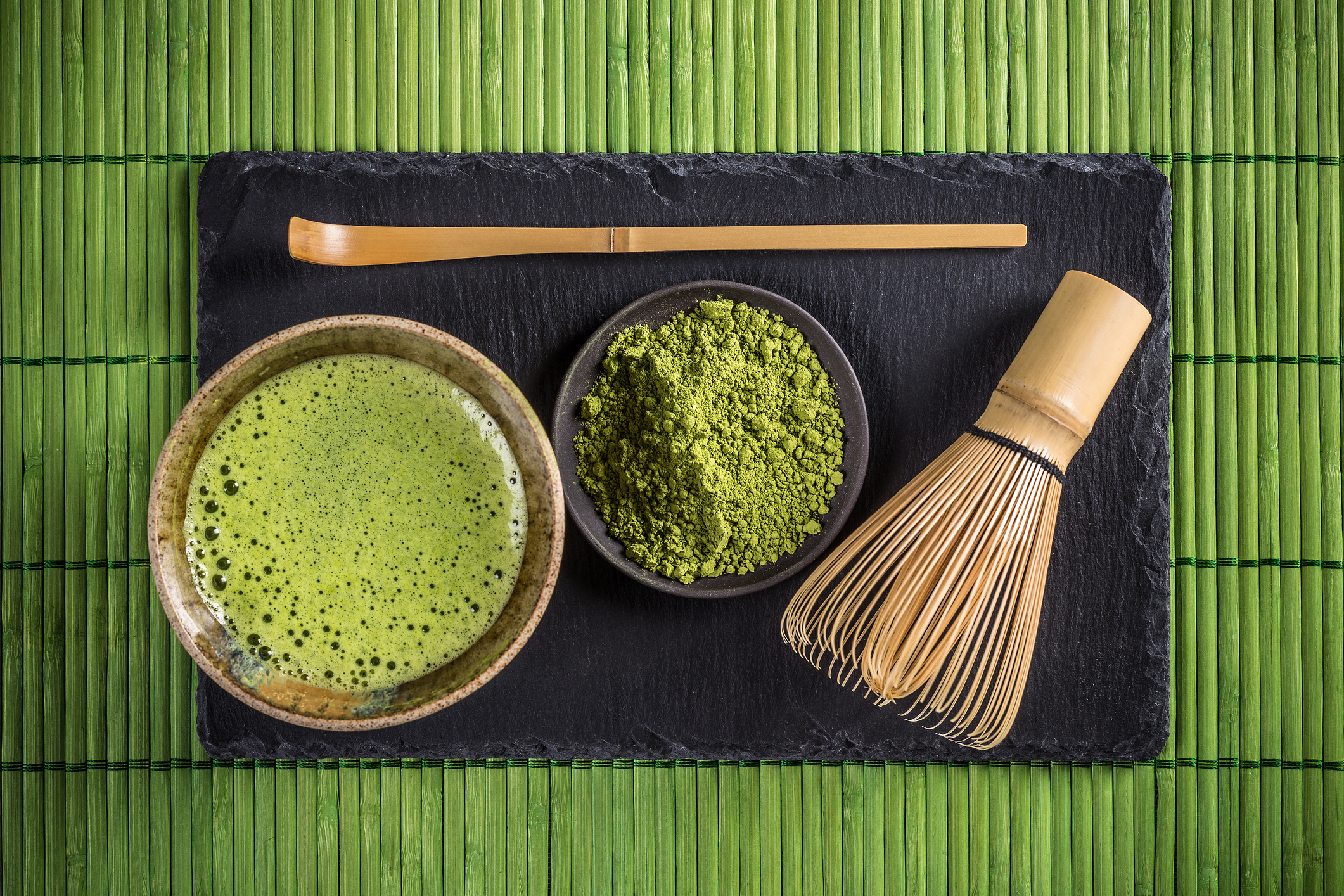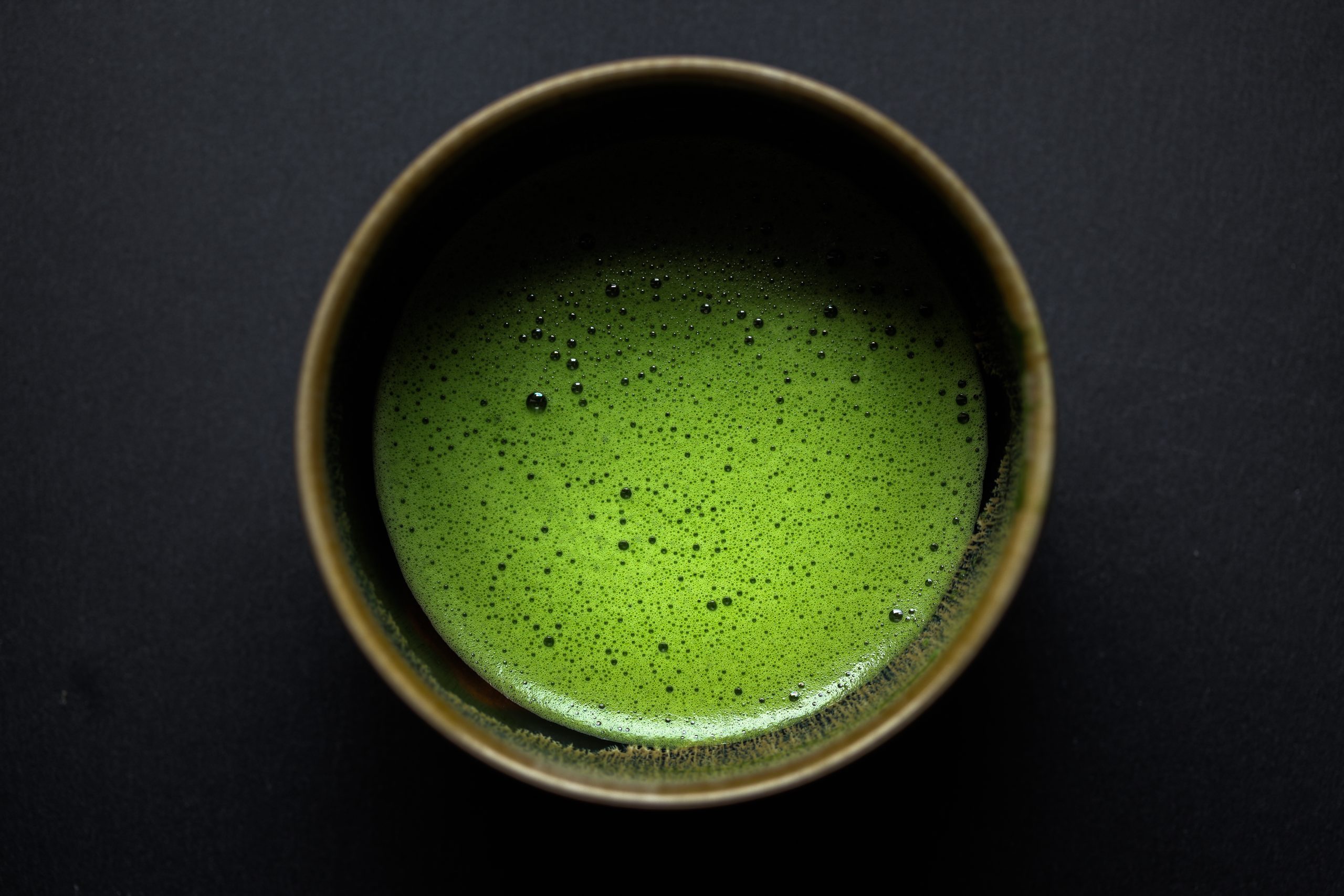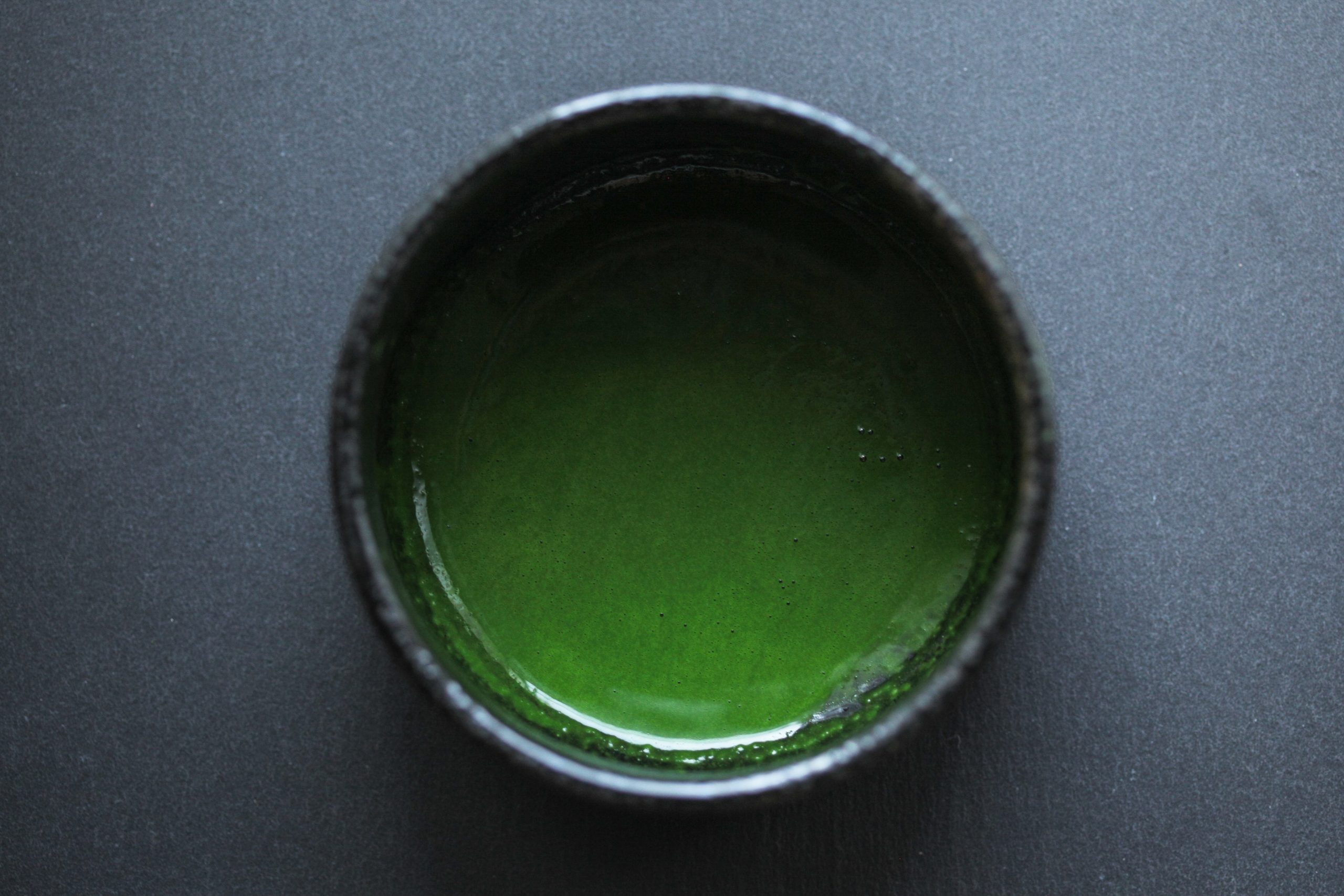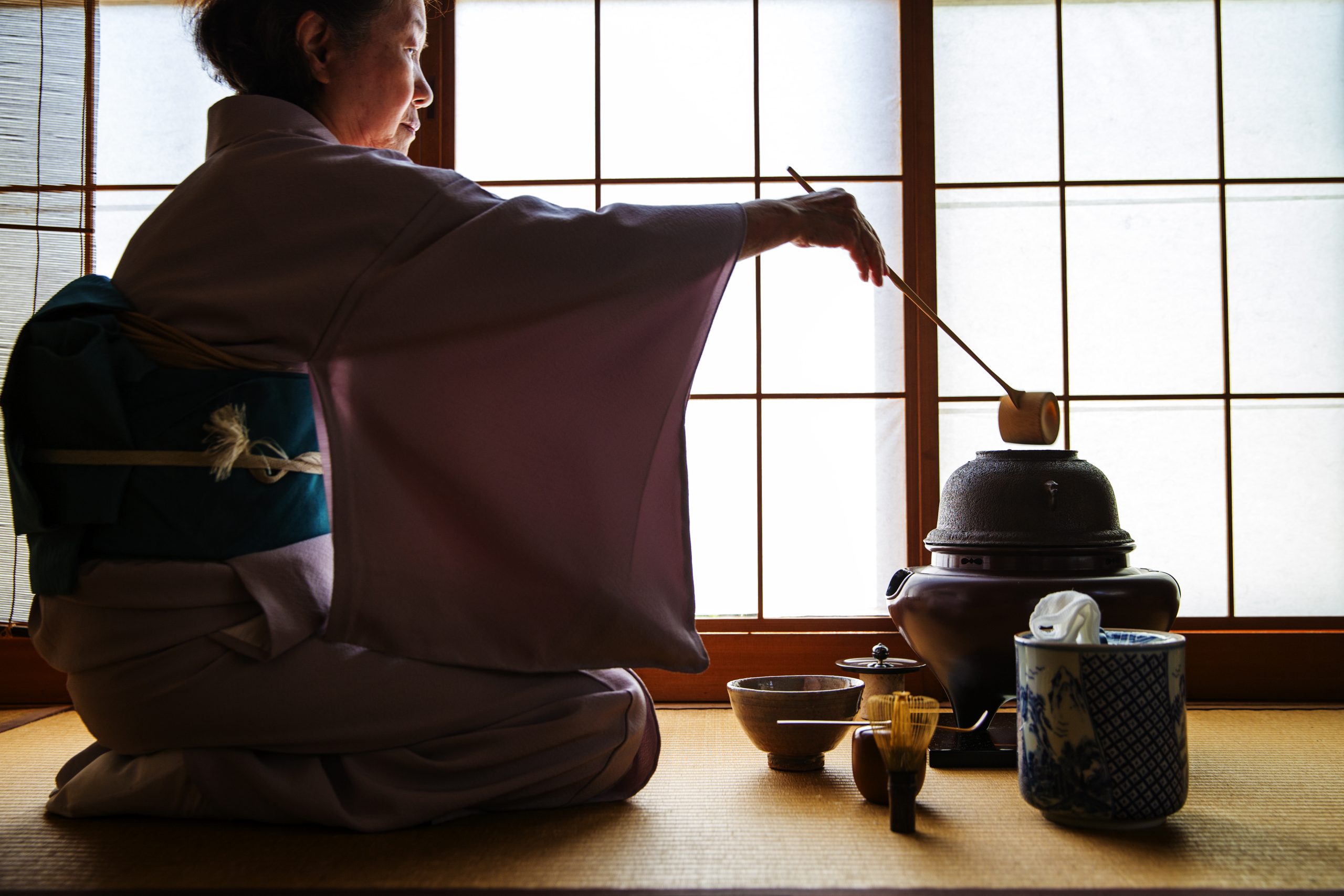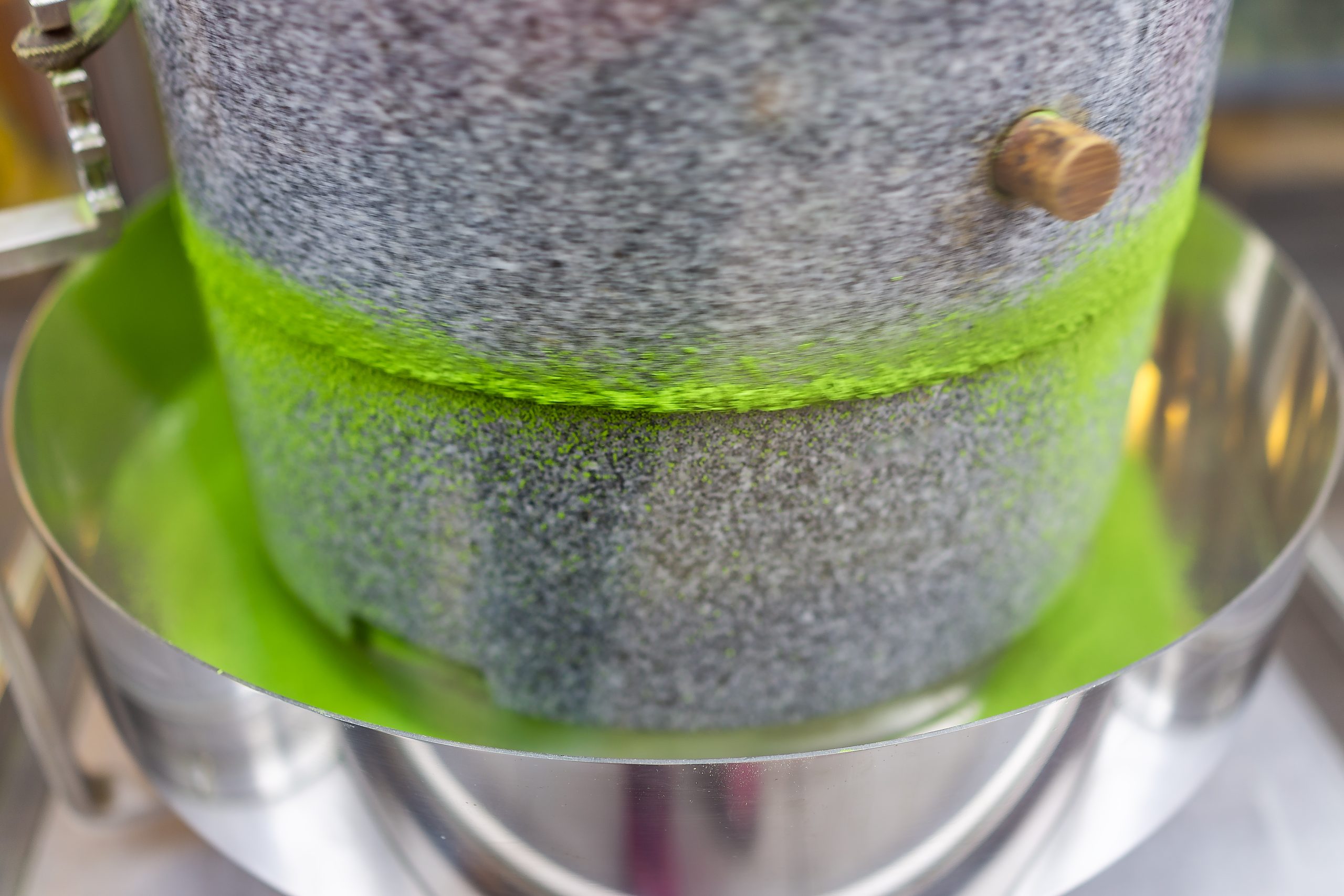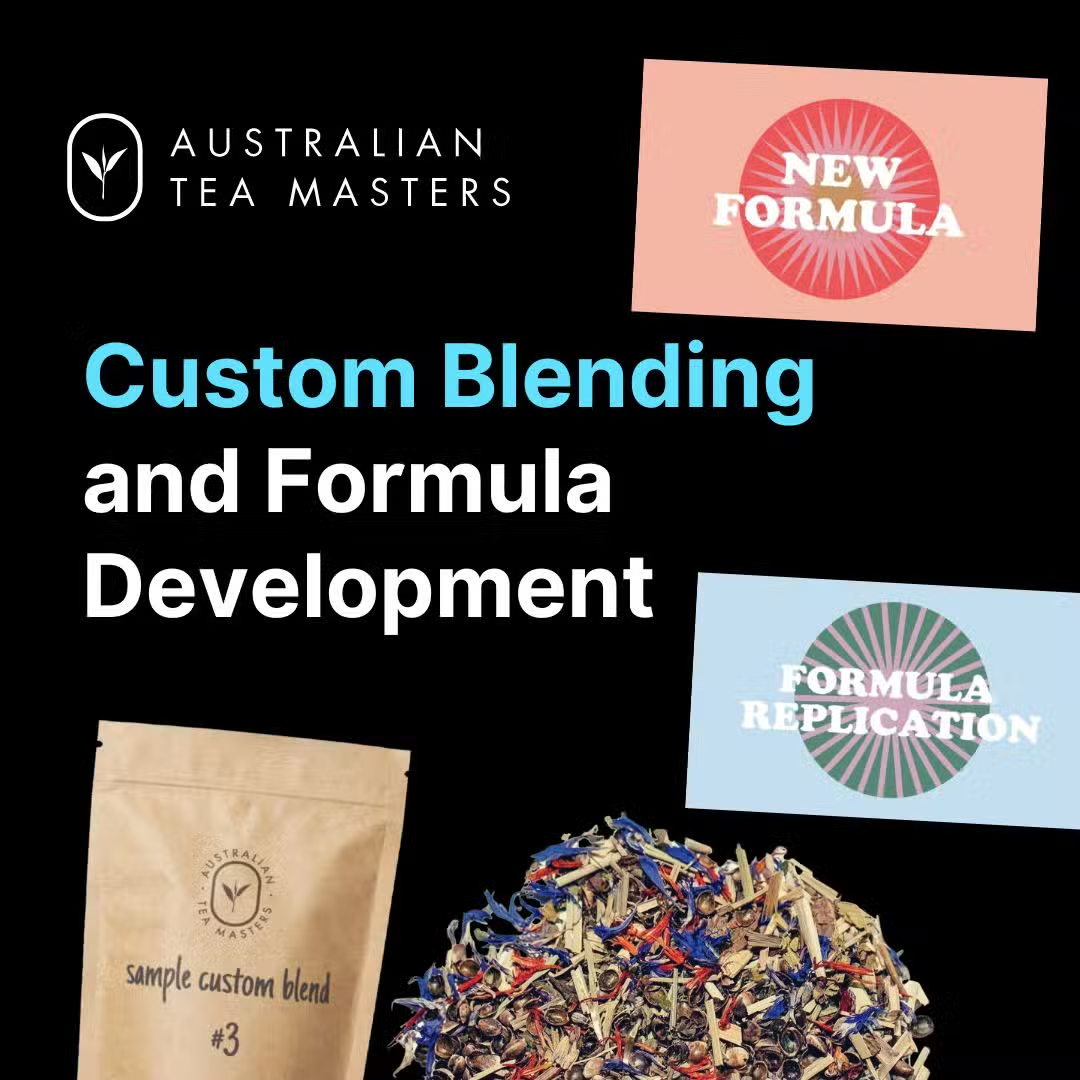Matcha is tea with a difference. This special type of powdered green tea is made from semi-shaded leaves that have been ground up with a millstone. Unlike regular tea, it can easily be cooked with to make a delicious and nutritious treat, or whisked into hot water and drunk.
Because you are consuming tea leaves directly rather than removing them, matcha is very strong and quite healthy. Consuming matcha is a fantastic source of theanine, polyphenols, and antioxidants, particularly catechins like EGCG. It also provides a great caffeine boost.
Aside from creating a beautiful drink, matcha has been gaining popularity among chefs for its ability to make incredible green tea flavoured foods. A trend that began in Japan, matcha can be baked into cakes and biscuits, used to make ice-creams and chocolates… the possibilities are endless (and very delicious).
Grades of Matcha
In the international market outside Japan, matcha is often marketed in one of three grades. This grading indicates the quality of the matcha you are buying,
Ceremonial Grade
This grade is not categorised in Japan the same way as it is in the west, but is of vital importance when buying, as it denotes matcha of the highest quality. All true ceremonial grade matcha is able to be used to make koicha, or thick tea (see below), the type of tea that is used both in Buddhist temples and traditional Japanese tea ceremonies.
Ceremonial grade matcha is silky, bright green, and has very little bitterness. It forms a thick and smooth liquor when whisked in ceremonial style, with a luscious sheen and opaque grassy green colour. There should be no brown tinge or muddiness in the drink.
Premium Grade
A step down from ceremonial grade, and best for everyday enjoyment. This high quality matcha is made using the young leaves near the top of shaded tea plants, and has a subtle but fresh flavour without too much astringency or bitterness.
Premium grade matcha is a good introduction to matcha drinking in the traditional fashion and makes a fantastic usucha, or thin tea, brew.
Culinary Grade
Sometimes known as cooking grade, culinary grade matcha is ideal for people looking to spice up their cooking with a tea-flavoured twist. This matcha is intended specifically for cooking use in the way that cooking saké is (basically, you wouldn’t drink it). It’s perfect for all kinds of treats: Think cakes, ice-cream, biscuits, and tiramisu.
Desserts flavoured with culinary grade matcha powder gain a subtle green tea flavour which, when added correctly, is mild, refreshing, and delicious. A classic pairing for these sweets is red beans, which compliment matcha perfectly. Your dish will also gain a fantastic boost of antioxidants – what’s not to love?
Not sure where to start? Take a look at the potential.
We don’t recommend culinary grade matcha for classical matcha tea drinking. Instead, try ceremonial grade matcha for a smooth, velvety brew and delicious taste.
Grades, the Japanese Way
Matcha grading is a little different in Japanese. Although English loanwords are often used to describe the tea, they don’t correlate to our notions of ceremonial, premium, and culinary. In fact, the meanings can even vary from seller to seller, making the journey even more confusing.
Grades are denoted by the loanword グレード (gureido). For example, you might see it written like グレード:高 (or Grade: High) when buying from Japanese sellers. Below is a short glossary (perhaps you could even call it a cheat sheet!) of words to do with grading that you may encounter.
| Saikō (最高, Highest) | Ichiban Cha (一番茶, First Flush) |
| Taka (高, High) | Niban Cha (二番茶, Second Flush) |
| Naka (中, Medium) | Sanban Cha (三番茶, Third Flush) |
| Hiku (低, Low) | Ii (良い, Good) |
| Puriimiamu (プリーミアム, Premium) | Warui (悪い, Bad) |
Looking to save a little time? Want to know exactly what you’re buying? Australian Tea Masters offers beautiful ceremonial grade and premium culinary grade matcha right here.
[let’s put some product cards here]
Culinary Potential
Looking for a bit of culinary inspiration? You’ve come to the right place. Take a look at these mouth-watering creations:
 Lattes Lattes |
 Crepe Cakes Crepe Cakes |
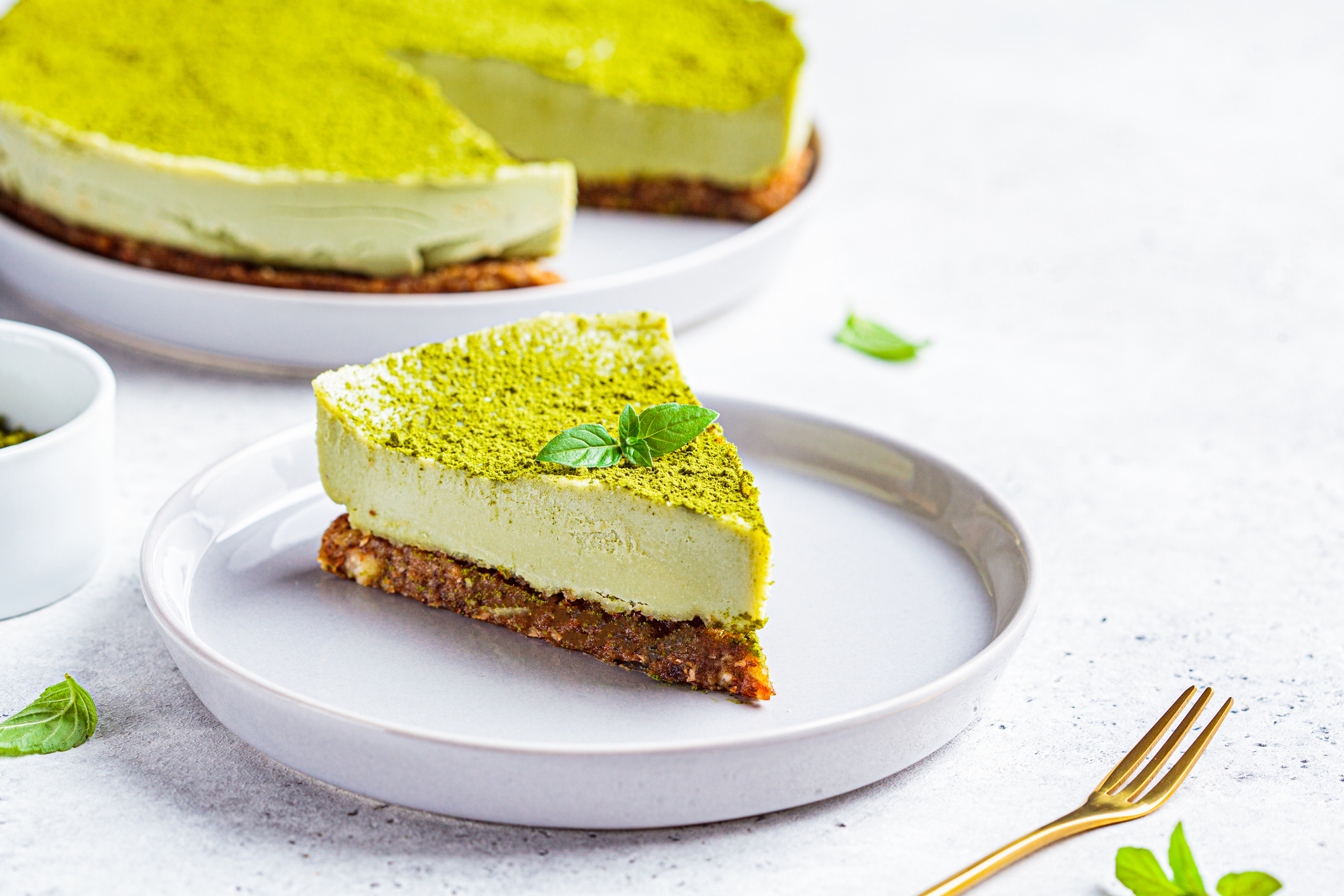 Cheesecakes Cheesecakes |
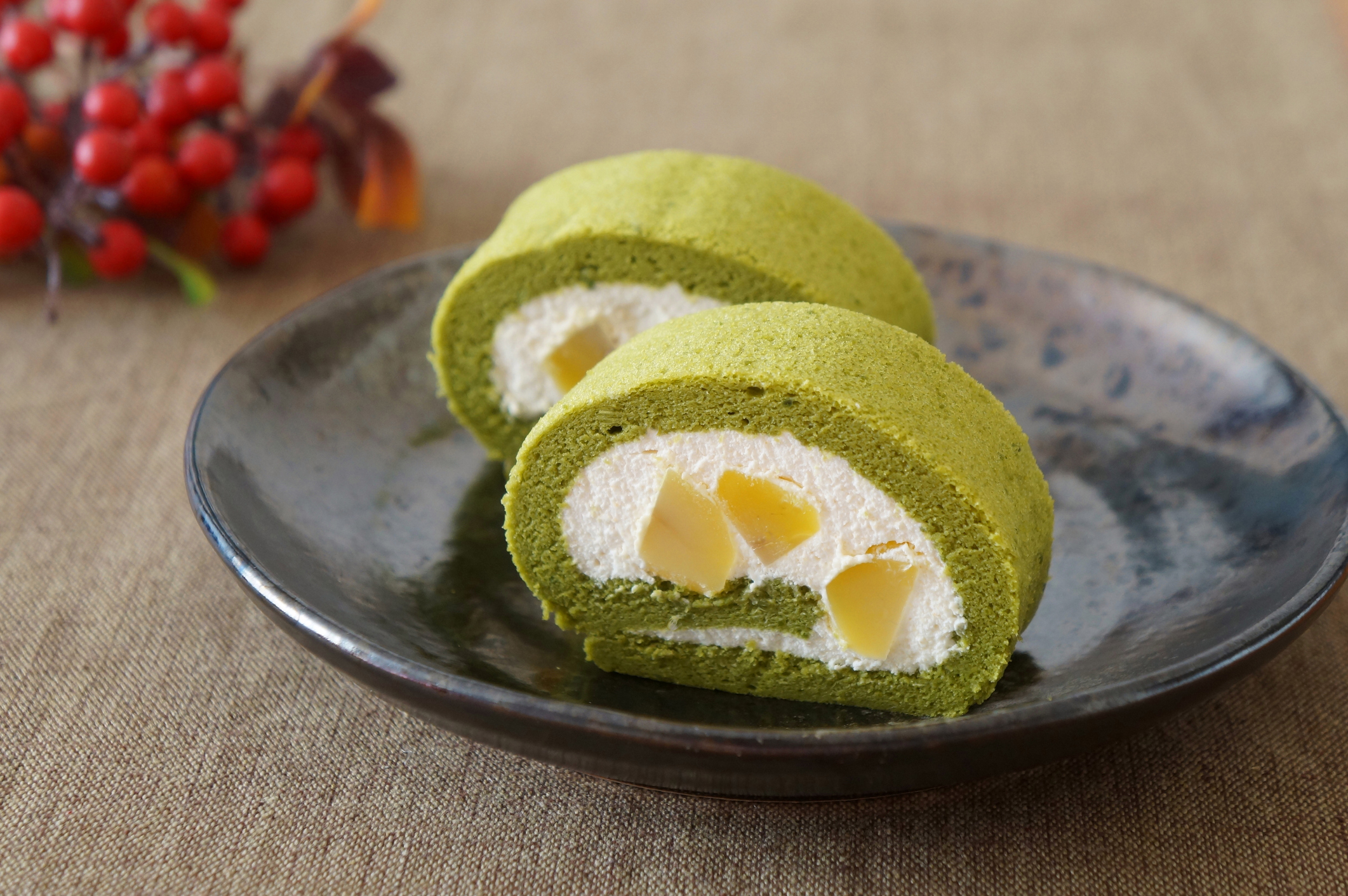 Swiss Rolls (#1) Swiss Rolls (#1) |
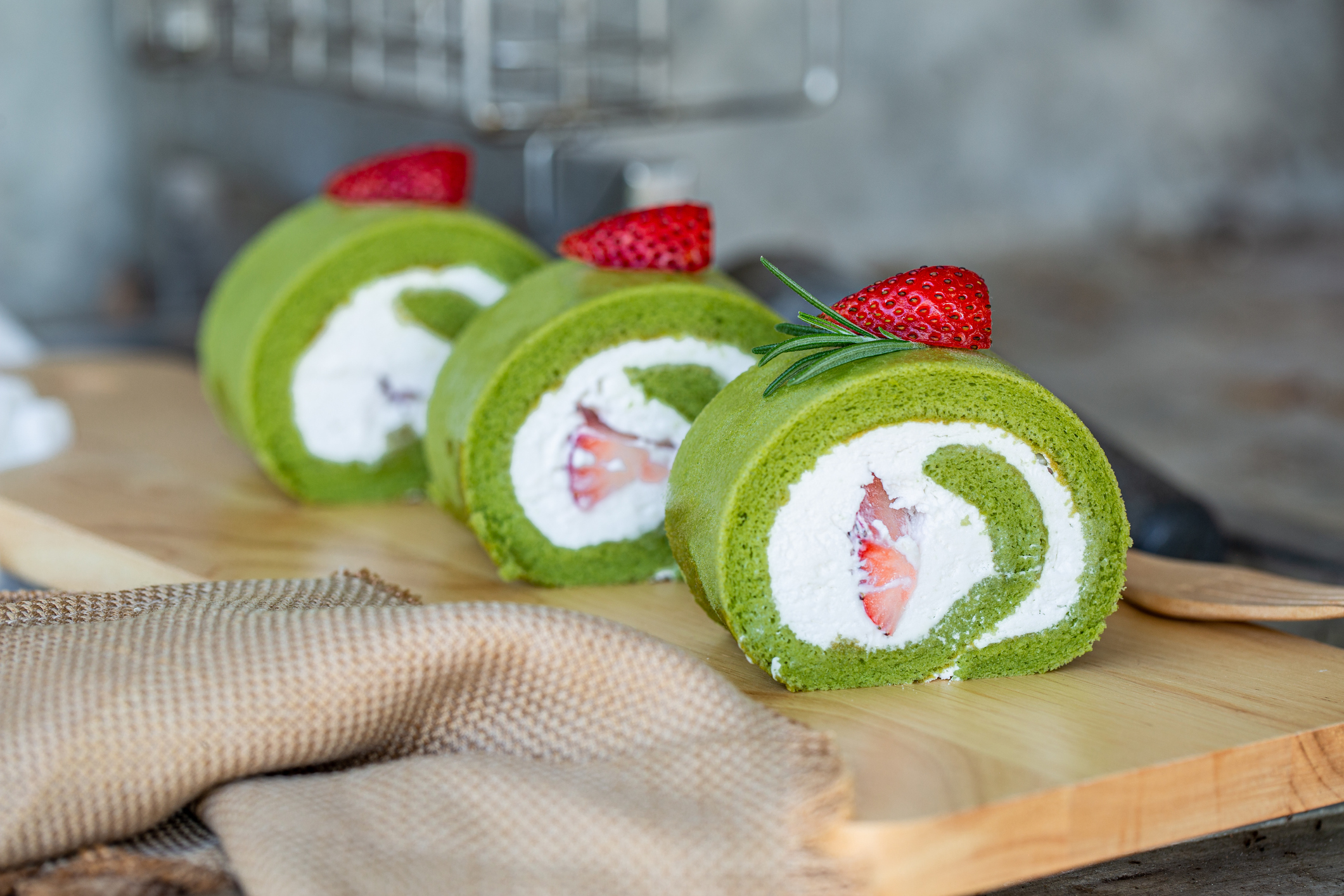 Swiss Rolls (#2) Swiss Rolls (#2) |
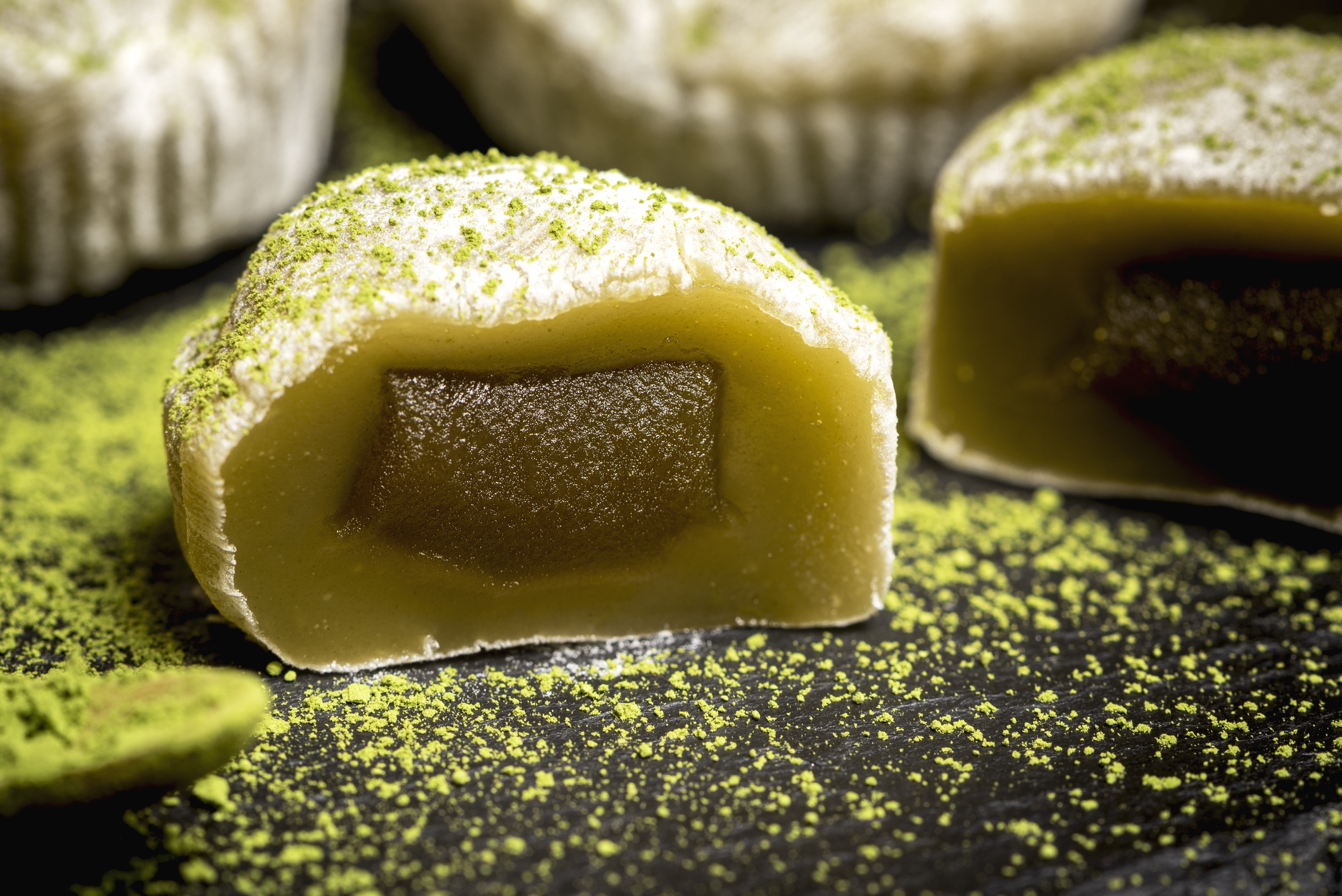 Mochi Mochi |
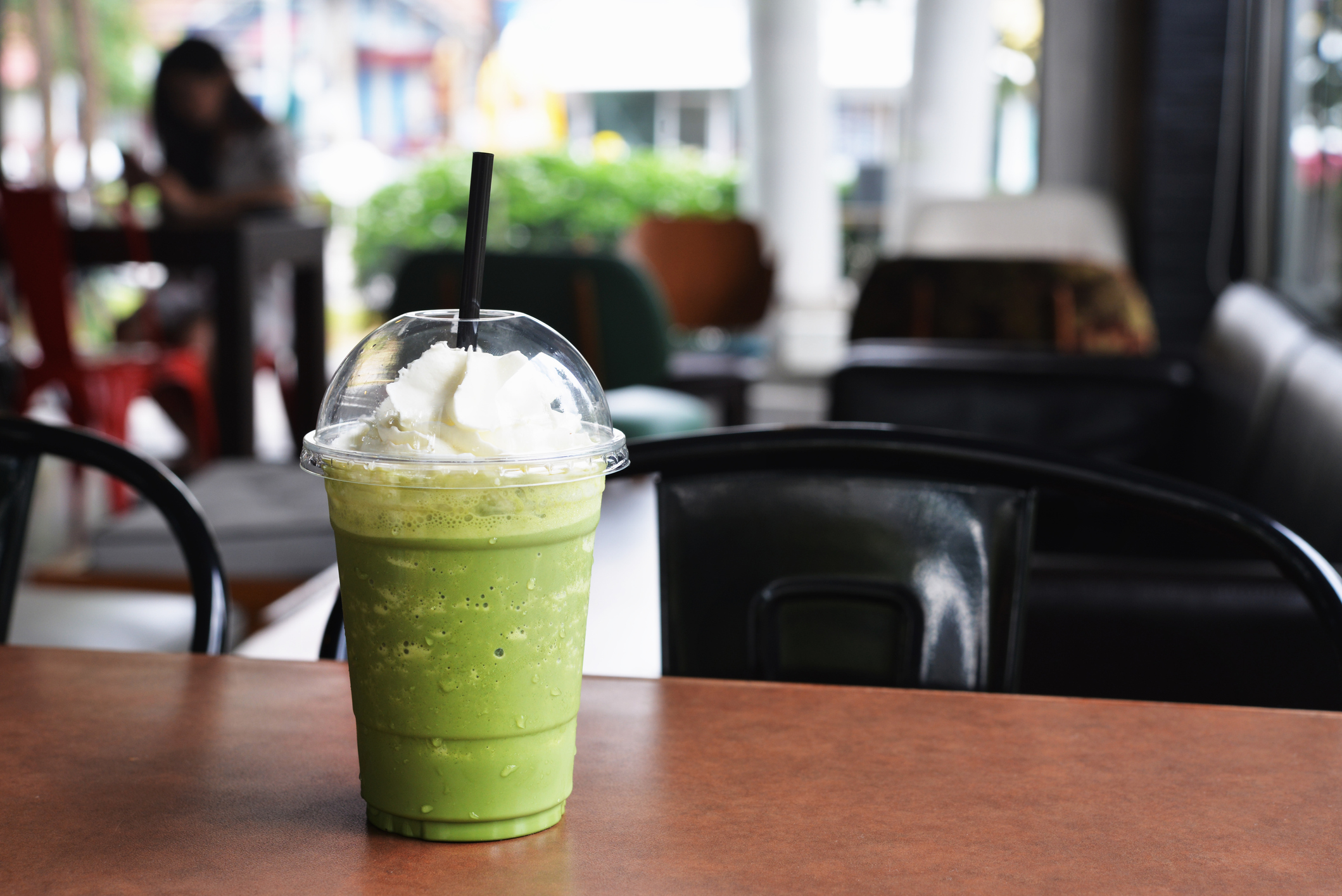 Frappes Frappes |
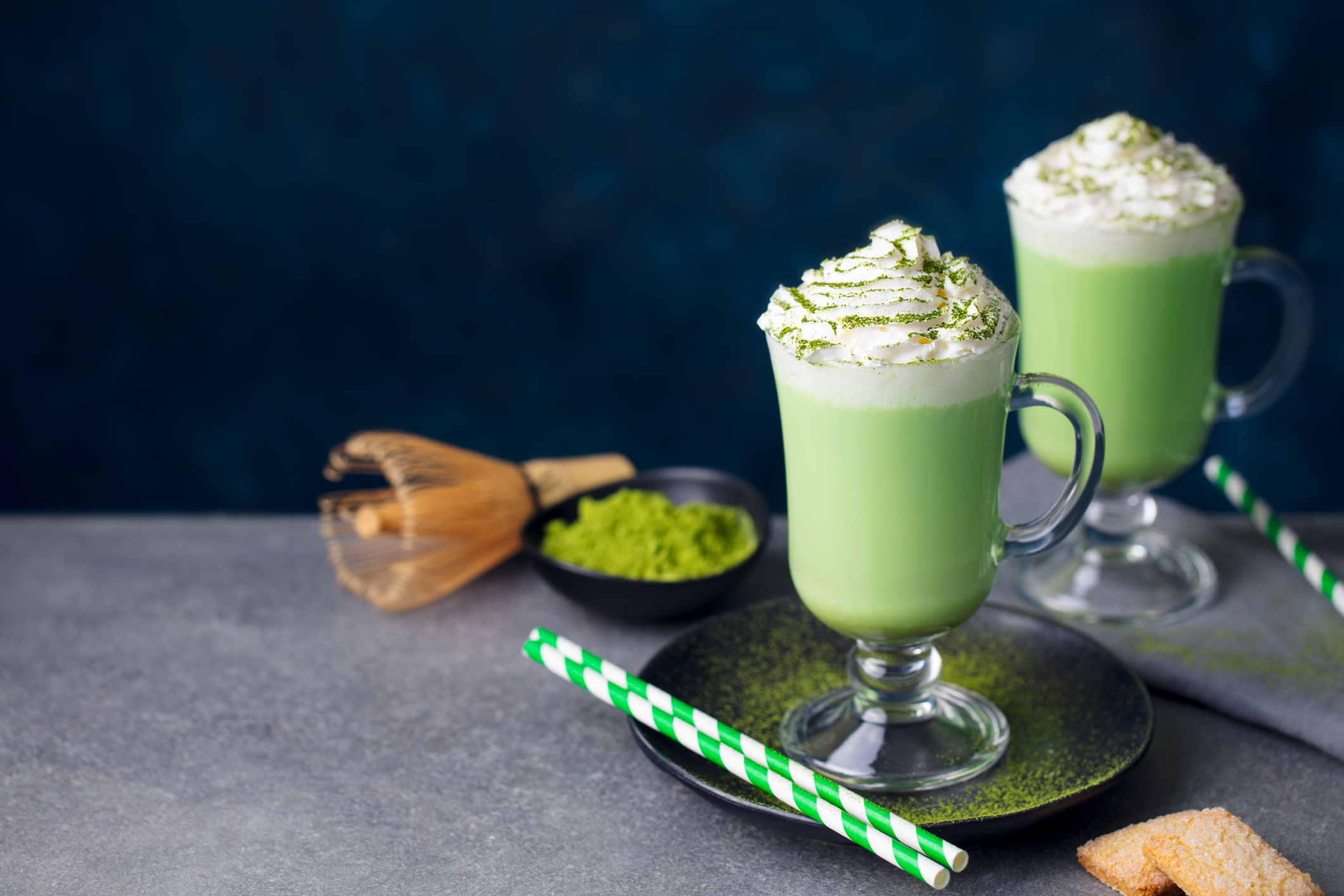 Milkshakes Milkshakes |
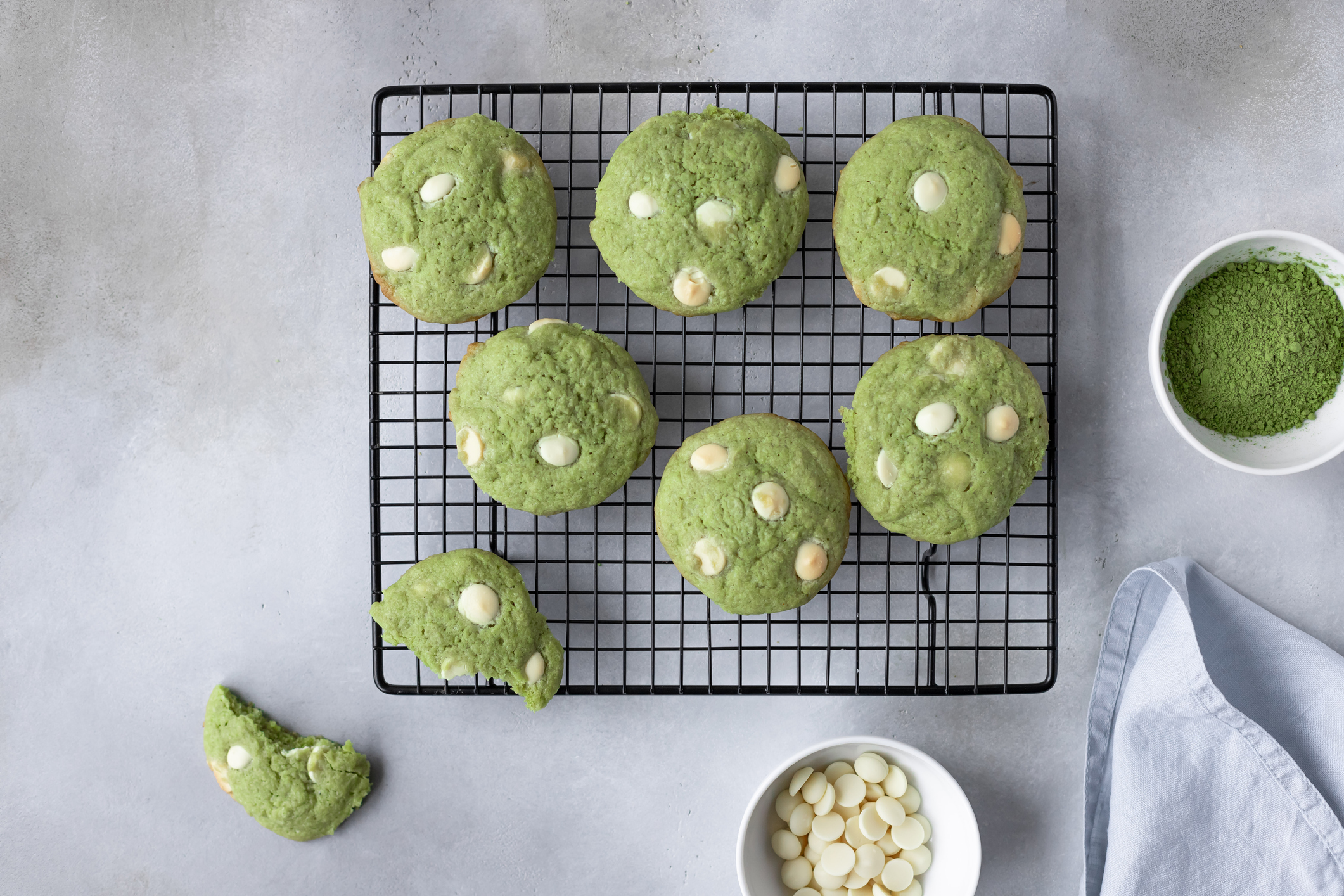 Cookies Cookies |
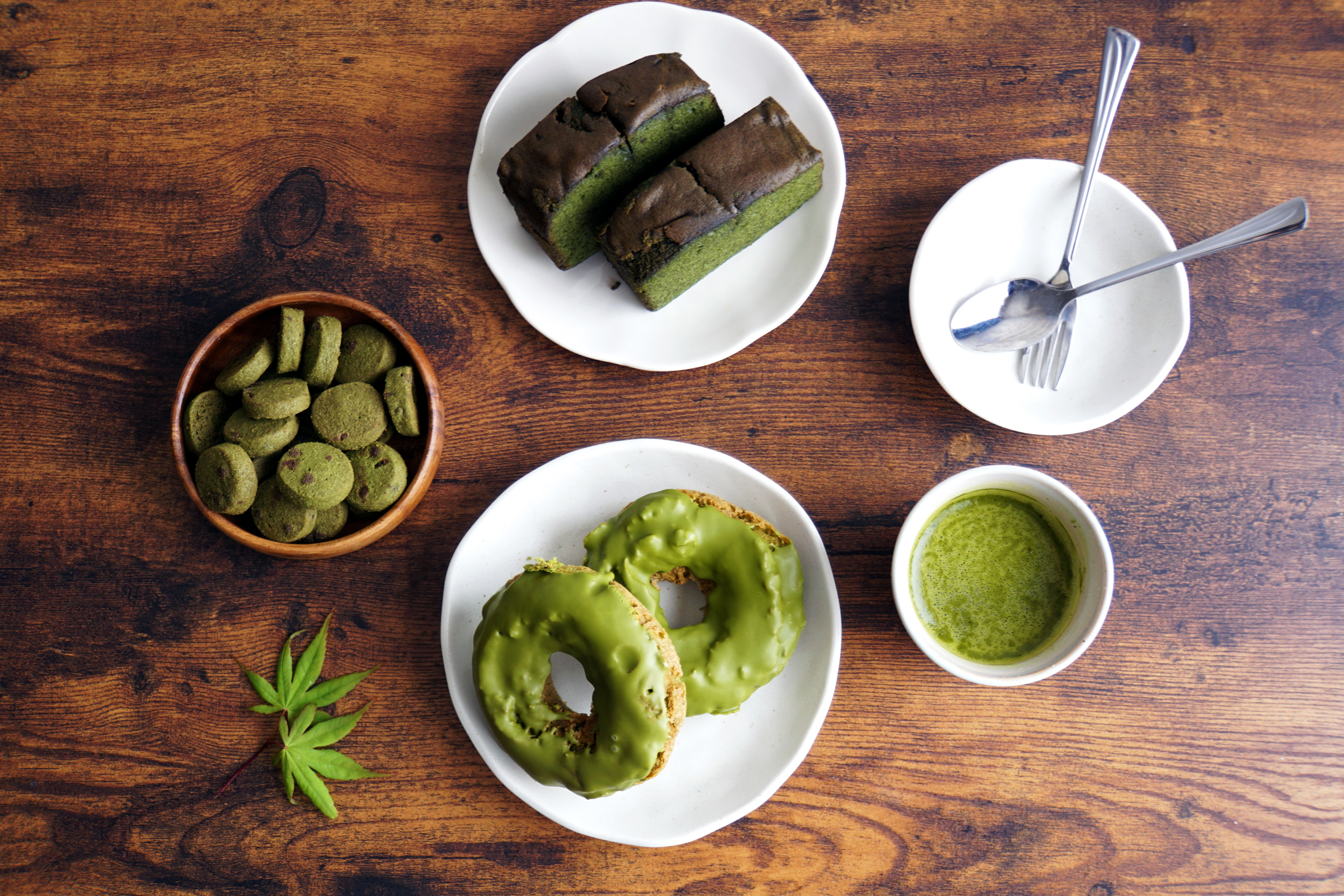 Assorted Sweets Assorted Sweets |
 Shortbread Shortbread |
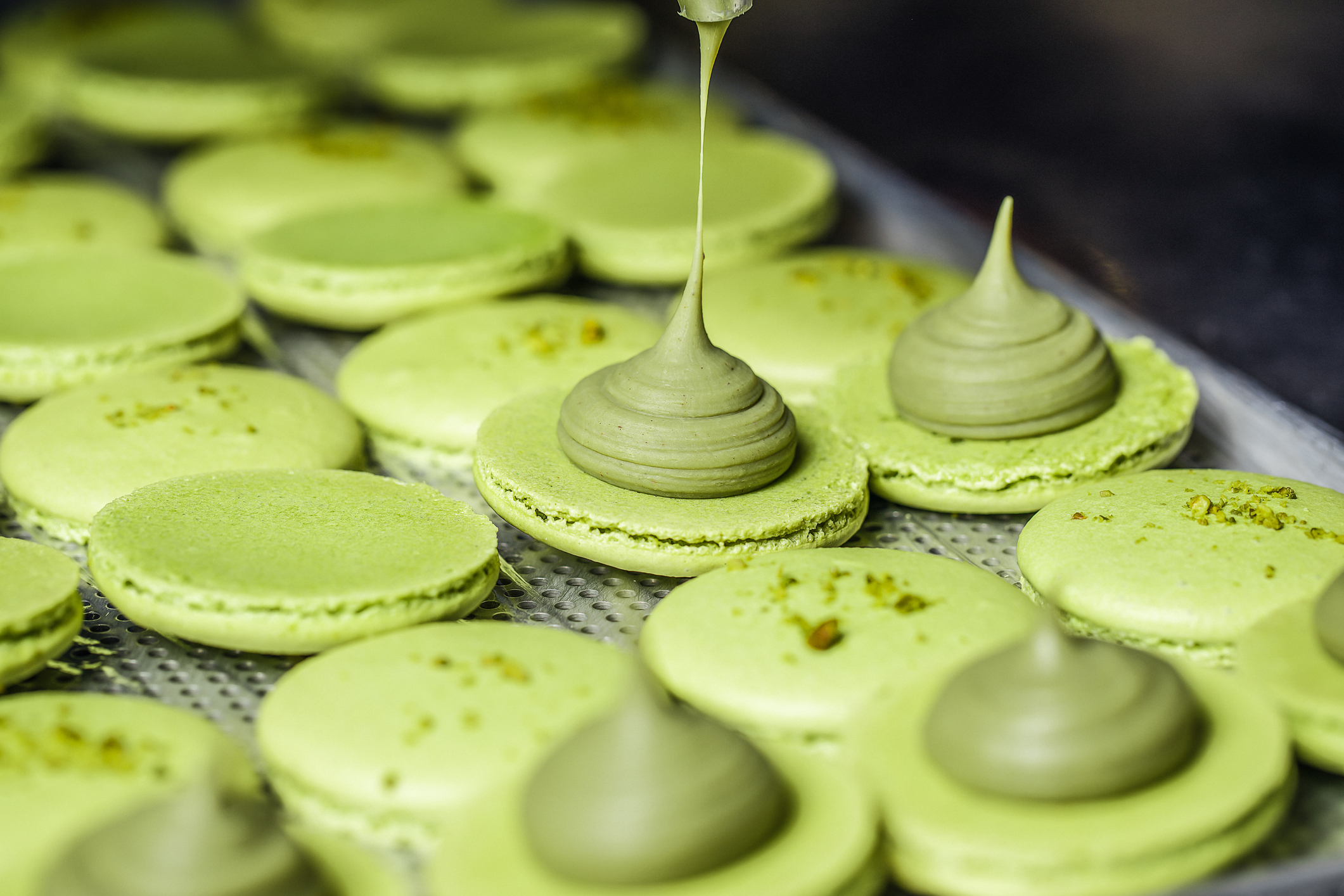 Macaroons Macaroons |
Tools of the Trade
If you’re intending to drink ceremonial grade matcha, it’s always best to prepare it in the traditional style. For this we highly recommend three tools: The chawan, chashaku, and chasen, which are specifically designed for the preparation of this drink. They can be substituted, but the results may be suboptimal.
Chawan (茶碗, Tea Bowl)
This traditional bowl isn’t just for holding the matcha and water as you prepare it, it’s also the primary drinking vessel. Chawan come in a wide variety of shapes, sizes, and styles, some perfectly round, and others aiming to retain a rustic aesthetic by utilising a lightly warped shape.
At gatherings in Japan where matcha is prepared, a number of people may drink matcha from the same chawan, with the bowl being passed from person to person in sequence. This practice takes its roots from samurai culture, which encouraged members of a clan to drink from the same bowl to reinforce the clan’s bond.
Chawan are usually made from porcelain or pottery, with porcelain more appropriate for summer, and pottery more appropriate for winter.
Chasen (茶筅, Tea Scoop)
The chasen is a special type of whisk used to combine the matcha and water together, and promote a good quality foam on the top. It is made from a single piece of bamboo, with the individual prongs (or pondate) created by splitting a good portion of the body.
The number of pondate on any given chasen varies. A good chasen has at least 100 pondate.
Chasen are usually made from either Bai White bamboo or Jin Golden bamboo. Of the two, Bai White is far more brittle. Jin Golden bamboo creates a far more durable chasen and has a longer life, providing the chasen is looked after and used correctly.
Upon first obtaining a chasen, its pondate should be soaked in cold water for around two minutes. For ongoing care, the chasen should simply be rinsed with water rather than vigorously washed after each use, and stored on a naoshi (chasen holder) so that it will keep its shape.
In desperate times one may resort to using an egg whisk to whisk the matcha together, but the results aren’t ideal.
Chashaku (茶杓, tea scoop)
The chashaku is a wooden bamboo tea scoop, made from a singular narrow piece of wood carved out from the main bamboo body. The ideal chashaku is 18cm long and carries an approximate 48° curve for the scoop.
Substitution of the chashaku is not recommended. This is because chashaku are the perfect size for scooping matcha, and instructions are usually written in heaped chashaku spoonfuls for measurement. For example, using a metal teaspoon can lead to using the incorrect amount of matcha, and the powder is also more likely to stick to the metal surface.
If a teaspoon must be used it is recommended to convert chashaku spoonfuls to grams, at a rate of about 1 gram per spoonful. A sensitive and accurate kitchen scale is necessary.
Traditional Preparation
Preparing matcha for drinking is somewhat different from preparing regular tea, but the technique isn’t too difficult to get down, and with a little practice you should be able to prepare it easily for yourself whenever you like.
Before we get started, there are two types of traditional preparation to be considered.
The first type is usucha, or thin tea. Usucha is usually made when the matcha you have on hand is of average quality. This tea is quite thin but the liquor will still be clouded over and opaque.
The second type is koicha, or thick tea. Koicha should only be made when you have high quality matcha. Because of the extra powder used to make koicha, culinary matcha will become very bitter and unpleasant to drink when prepared in this manner.
Now, let’s look at how to prepare each. You will need a chawan, chasen, chashaku, and a source of hot water.
Usucha (薄茶, Thin Tea)
1. Preheat the chawan
Take your chawan, and fill it with hot water until it is ⅓ full.
2. Prepare hot water
Set aside 70ml of hot water to cool.
3. Wet the chasen’s pondate
Place the chasen prongs-down in the hot water, so that it stands upright. This is to wet the prongs.
4. Employ patience
Do nothing until the chawan has been evenly preheated.
5. Dry the chawan
Take out the chasen and set it aside, then empty the water from the chawan and dry it with a clean tea towel.
6. Scoop the matcha (and sift if necessary)
Use the chashaku to take 2 heaped scoops of matcha powder, and put them in the chawan. If there are any powder clumps, remove them.
7. Pour the water
Wait until the water you set aside cools to 75˚C, and then pour it into the chawan.
8. Whisk the matcha
Take the chasen in your dominant hand (the pondate will probably still be damp; this is fine) and the chawan in your weaker hand, then use the chasen to whisk the matcha together in tight w-shaped motions. This is an action that requires quick flicks of the wrist, rather than whole strokes with the arm.
9. Build the froth
Keep whisking until the matcha has lots of froth. The froth bubbles should be tiny but plentiful, and cover the whole brew. If they does not, or this process seems to be taking more than a minute or two, you are probably not whisking correctly (even an egg whisk in place of a chasen will build froth, but the incorrect whisking technique will not). Make sure you’re making quick tight w shapes as you whisk.
10. Enjoy the matcha
You’re all done. Sip the matcha directly from the chawan and enjoy.
Koicha (濃茶, Thick Tea)
1. Preheat the chawan
Take your chawan, and fill it with hot water until it is ⅓ full.
2. Prepare hot water
Set aside 40ml of hot water to cool.
3. Wet the chasen’s pondate
Place the chasen prongs-down in the hot water, so that it stands upright. This is to wet the prongs.
4. Employ patience
Do nothing until the chawan has been evenly preheated.
5. Dry the chawan
Take out the chasen and set it aside, then empty the water from the chawan and dry it with a clean tea towel.
6. Scoop the matcha (and sift if necessary)
Use the chashaku to take 3 – 4 heaped scoops of matcha powder, and put them in the chawan. If there are any powder clumps, remove them.
7. Pour the water
Wait until the water you set aside cools to 75˚C, and then pour it into the chawan.
8. Whisk the matcha
Take the chasen in your dominant hand and the chawan in your weaker hand, and use the chasen to whisk the matcha together with big, gentle circular motions. Try to rotate the chasen as you do this so that the handle points out to the nearest side of the bowl. Do not encourage or build froth within the liquid.
9. Continue whisking
You want to keep going until the matcha is well combined with the water. The end result should be a smooth liquor.
10. Enjoy the matcha
You’re all done. Sip the matcha directly from the chawan and enjoy.
Troubleshooting Bitterness
If you find that your matcha is too bitter, there are a couple of possibilities:
- Too much matcha powder was used
- The water temperature was too high
- Preparation instructions were incorrectly followed
- The matcha is not the correct grade
If you made koicha and suspect the wrong grade of matcha was used (after ruling out problems with water temperature, amount of powder, and technique), you may still be able to use the same powder to make usucha and get a better result. However, if the strong bitterness comes out even in properly prepared usucha, the matcha you have is probably culinary matcha and unsuitable for drinking. Try using it in cooking or baking instead.
Ceremonial Preparation
If your intention is to prepare matcha as part of a proper Japanese tea ceremony (chado, or chanoyu – from here on we’ll refer to it as chanoyu), the method of preparation is very different from the simple instructions above. Although koicha tea is made, you will not only need extra tools to do this, but also specific types of decoration, and a suitable environment.
Chanoyu is a rigid and complex tradition that takes years, sometimes even decades, to master.
It is generally considered much more difficult than the Chinese gong fu tea ceremony due to the large number of steps involved in conducting it, and the specific movements required for each.
But don’t be intimidated! This doesn’t mean a determined student isn’t capable of putting on a good display. It does however mean that you probably shouldn’t go running around calling yourself a chanoyu master without the years of proper training.
If you need matcha for this type of ceremony, we strongly recommend our ceremonial grade matcha. It forms the best brew in koicha style and its high quality will help your ceremony shine.
Matcha Quality
When you have a matcha of unknown grade, you can still learn to tell its quality. This is done by eye and through taste, but may require some trial and error to help you establish what you’re looking for.
Common Differences
| Higher Quality (Better for Drinking) | Lower Quality (Better for Cooking) |
| Luscious, vibrant green powder. | Brown-tinged, yellowish, etc. The liquor may brew darker as well. |
| When made as usucha, doesn’t create a large amount of froth. | When made as usucha, creates lots of froth |
| No lumps in the liquid; liquid should be smooth and silky aside from froth. | Lumps of combined powder appear in the liquid or side of the bowl and are difficult to separate by whisking. |
| Usually light and grassy, may have marine notes. | Bitter when brewed. Can be unpleasant on the palate even when made as usucha. |
The beautiful bright green colour of high quality matcha powder is created specifically by shade-growing the tea leaves before plucking.
Even if you have two samples of matcha with the same grade, this is not a guarantee that they will taste or look exactly the same. They may have come from different sources or even undergone different production methods.
Matcha tends to be made from one of a few tea cultivars that are specifically good for matcha production, as opposed to one designed for tea like sencha. If the cultivar of your matcha is listed as Kakitsubata, Saemidori, Samidori, Tsuyuhikari, Asahi, or Uji Hikari, this is a good sign, but there are other cultivars that produce high quality matcha too.
We sell premium Tsuyuhikari and Kakitsubata matcha. Tsuyuhikari, which means “Dew Light”, is a rare cultivar gaining popularity in Shizuoka, prized for its high umami taste. Kakitsubata is a premium ceremonial grade blend of Yabukita, Okumidori and Tsuyuhikari matcha from Sunagawa, Shizuoka.
It should be noted that true matcha is always shaded. If the tea was not shaded before it was picked, then the product made is not actually matcha, just green tea powder. Unfortunately, some unscrupulous sellers may list this powder as matcha. While it can be used in cooking, we always recommend proper culinary grade matcha for a superior taste.
Where does high quality matcha come from?
Matcha is available from a number of countries, including China, Korea, and Taiwan, but some of the best matcha is produced in Japan. Uji City in Kyoto and Nishio city in Aichi are particularly well regarded. Korean matcha, known as garucha, is also held in high regard.
Importantly, good matcha from reputable sellers will always list its origin. If the origin is not listed it might be because the seller is trying to hide something!
Producing Matcha
Matcha production is a little more complicated than making a standard green tea (like a sencha, for example). The main way matcha differs is that it undergoes a shading process before it is picked, and a milling process to create the fine powder we recognise near the end of its production.
Let’s follow the production of matcha from leaf to bowl.
Cultivation
Once the tea is planted, it is pruned frequently to keep it at a certain height and to encourage the branches to spread out over a wider area, increasing the number of leaves that can eventually be harvested per plant.
Tea plants are ready for their first harvest when they are five years of age, which is when they reach maturity. However, the tea created from these young plants can be inconsistent in taste, so tea for commercial sale isn’t usually made until they reach eight years old.
In Japan, the shape the plants are kept in is usually very even and uniform. This is because machine harvesting is very common. New shoots also tend to point directly up, a result of breeding cultivars that encourage this characteristic so that mechanical harvesters can cut them with greater accuracy and less leaf breakage.
Shading
Shading is one of the most fundamental aspects of producing matcha. Without the shading process, it cannot actually be called matcha at all, and instead should simply be referred to as “powdered green tea”.
Three to four weeks before the leaves due to be plucked, large net-like blankets are placed over the tea bushes so that up to 90% of sunlight upon them is blocked. This is an extremely delicate process that requires constant monitoring and adjustment. Tea bushes need to be afforded only just enough sunlight to survive, which causes them to produce amino acids. Some cultivars handle this stressful process better than others.
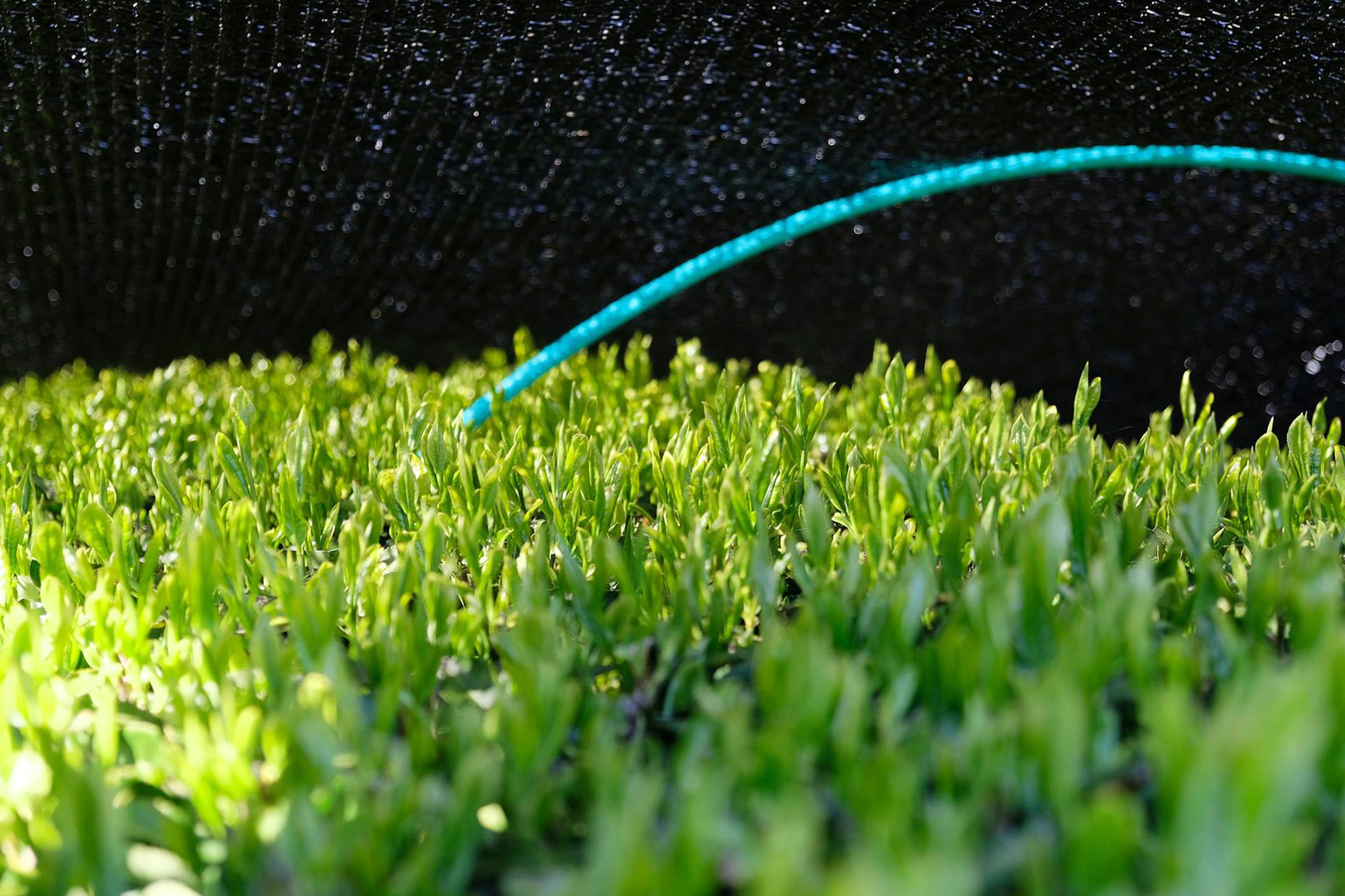
The aroma and flavour profile of the final product can be altered by experimentation with shading. For example, using the typical black mesh will produce a different result than the more traditional layered bamboo straw. Using multiple layers of shading will also alter the final outcome.
The traditional shading method utilises bamboo straw spread across a bamboo frame, which is placed directly over the top of the tea plants. The amount of straw depends on the producer’s goals for the final product. Similarly, the newer method instead uses a steel frame with black plastic mesh in place of bamboo straw, which is longer lasting and can be reused year in, year out.
Harvesting
In Japan, harvesting tea leaves for matcha can be done in one of three ways. They can be hand-picked, cut by handheld devices and sheers, or cut by a self-propelled tea harvester. The method of harvest will affect the quality of the final product.
Hand-picking
In hand-picking, the leaves are plucked by hand at a specific point in the stem, predetermined by the goals of the producer. This helps to ensure that most, if not all of the harvested leaves have the correct leaf-to-bud ratio, and that leaves are not torn in the process.
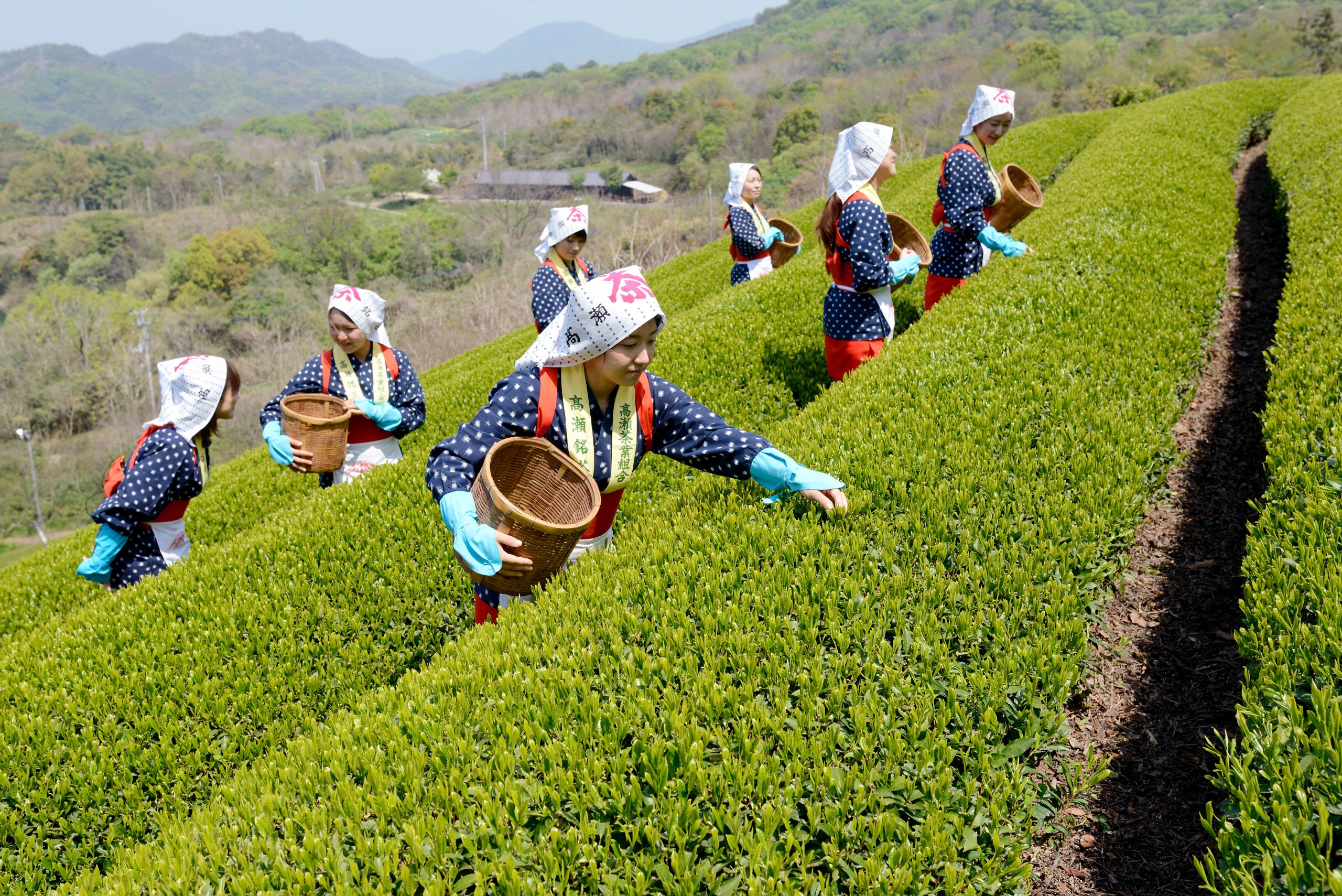
While hand-picking is revered by some, and is thought to produce the highest quality matcha, the process is very expensive due to Japan’s high cost of labour. This in turn ensures that hand-picked matcha attracts a much higher price premium.
This technique is mostly restricted to smaller tea fields. It is mostly commonly employed in Uji, a small city in Kyoto Prefecture renowned for its green tea production.
Shears and handheld devices
Tea shears are essentially a very large pair of scissors with a bag, basket, or pan attached, which can cut many shoots at the same time. This greatly speeds up production while still allowing some degree of control and variation over the height at which the shoots are cut.
The pan allows a small amount of tea leaves to be collected before they are placed in a larger bag.
As an alternative, handheld devices that are raked over the tea leaves instead also exist. Their function is similar to that of a mechanical lawn trimmer, and they are usually manned by one to two people, depending on the size of the device. These devices allow a huge amount of tea to be harvested all at once, but allow less variation than sheers on the height of the pick.
Tea is collected in a large bag attached to the back of the device. Because tea bushes in Japan are usually kept in neat rows with upright shoots, devices that require raking motions can simply be run along the bushes until the harvester is full or the end of the row is reached.
It’s important to note that normally we associate machine, mechanical and sheer harvesting with a lower quality leaf, but in Japan this is not necessarily the case. Producers have invested heavily in the invention of machines and devices which can harvest tea at almost the same quality as a hand-picked batch. While hand-picking almost certainly produces the highest quality Japanese matcha, the difference in taste to casual consumers might be considered minimal.
Self-propelled tea harvesters
Some tea farms expand at such a large scale that machines called self-propelled tea harvesters become necessary. It is best to think of them as giant ride-on lawn mowers, which only require one driver to harvest the tea.
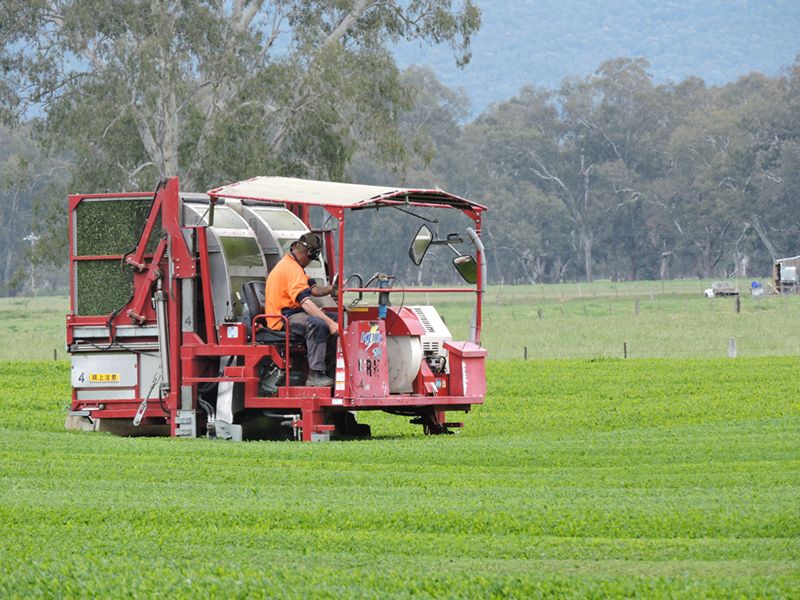
They are by far the fastest and cheapest harvesting method, but offer the least discrepancy on the height of the pluck of individual stems. They are especially common in Kagoshima and Shizuoka Prefecture, in which large, expansive tea fields stretch kilometres out.
Self-propelled tea harvesters are difficult to impossible to use on fairly uneven or mountainous terrain, at least not safely. For this reason they are mostly constrained to tea fields that are relatively flat.
Leaf-to-bud ratio
Only the top two tips of each new shoot are picked. These are the youngest parts of the plant and a lot of effort is required for a much smaller yield. When done properly this can make any resultant tea very expensive, especially if it was hand-picked, as can happen in places like Uji.
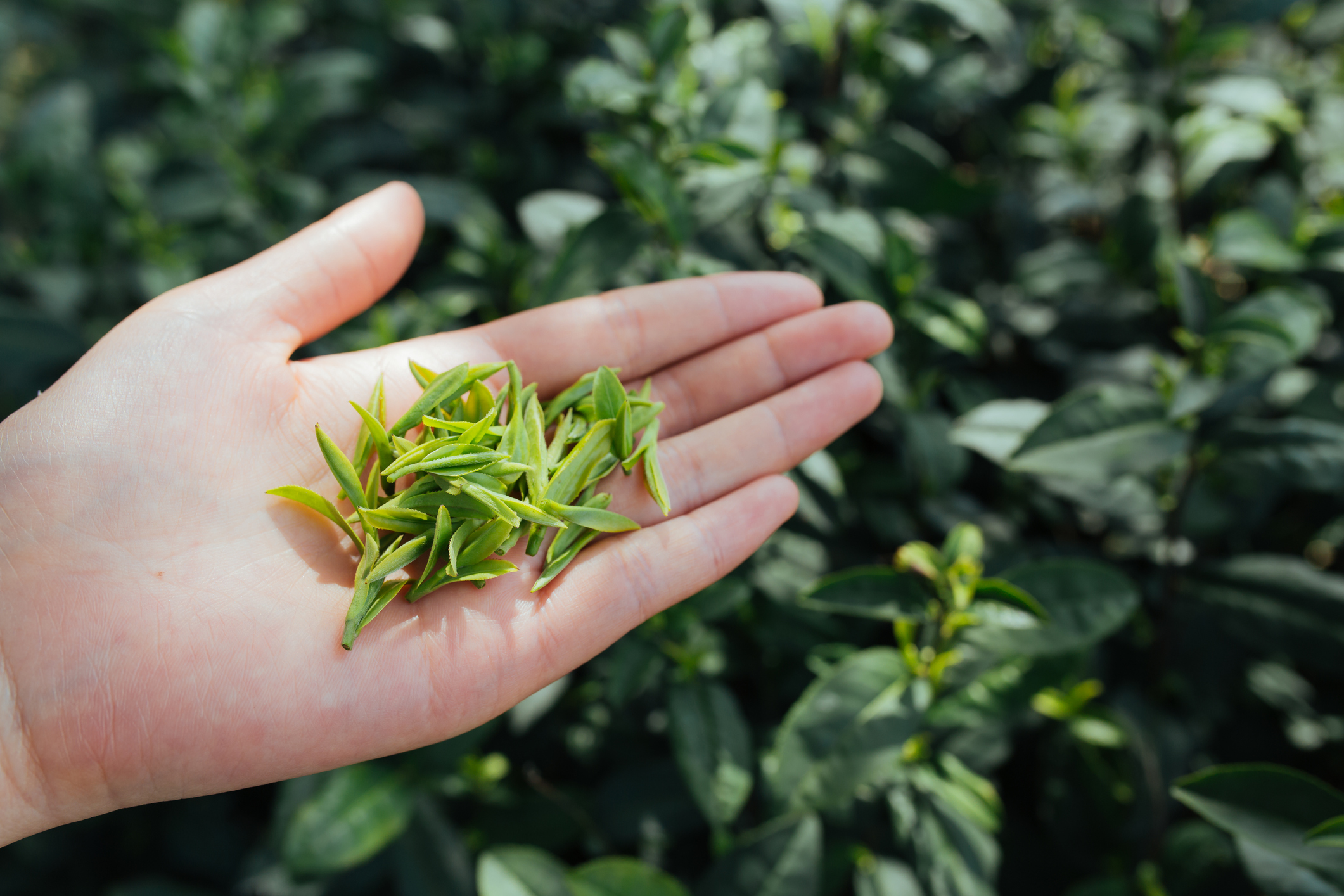
The timing of the harvest
When to harvest the tea leaves depends largely on the cultivar used, but most plants can begin being harvested for the first flush around May of each year. A cultivar is often declared as early, middling, or late-producing compared with Yabukita, which is the most common tea cultivar in Japan.
In Japan, farmers will harvest a tea tree up to three times per year, but for high quality matcha, the first flush is preferred, and sometimes later flushes aren’t harvested at all. When they are harvested, later flushes are usually dedicated to bottled tea or tea bags.
Processing Techniques
Firstly, the plucked leaves must be steamed to prevent any oxidation from occurring. This steaming process is surprisingly quick because the leaves are very delicate – just 20 seconds, and allows the tea to retain its green colour. Steaming also helps the tea to retain its amino acids and prevent the breakdown of other nutritional components through subsequent processing techniques.
The tea will then be dried with a blower, and the leaves crushed so that the producers may easily sort and de-stem them. This process is very important because the accidental inclusion of leaf stems will lower the matcha grade. During this process, even the little veins that run through these tiny leaves are removed.
The leaves have now been sorted into grades according to their colour, texture, and aroma, and the producer will cup them to determine their quality. After this has been done, they will be refrigerated until it’s time for the final stage: Milling.
Milling involves the unfinished tea, which is called tencha, being placed into a rough stone mill where it is ground together until it forms a bright green powder. Using the stone mill is important for consistency and getting the best result.
Once milling is complete, the matcha is ready to go. This process usually results in a couple of different grades of matcha that the producer will sell separately. It is vacuum packed or stored in an otherwise airtight container and then placed into storage until it is time for it to be shipped.
Note: Production methods can vary from producer to producer. The techniques we describe above merely detail a standard method for production, and may be altered to create different results, including employing techniques in a different order. Producers may also be secretive about their techniques, so it’s possible that other production methods exist that are unknown to the public.
To Close
We hope you’ve enjoyed this exploration into the world of matcha! It is a truly unique and beautiful tea that we’ve really fallen in love with – and we believe you’ll fall in love with it too.
If you’re looking at brewing your own matcha, we’ve got everything you need at in our tea shop. Take a look at our high quality matcha tools – the perfect present for you or a tea-loving friend.
Happy brewing!

